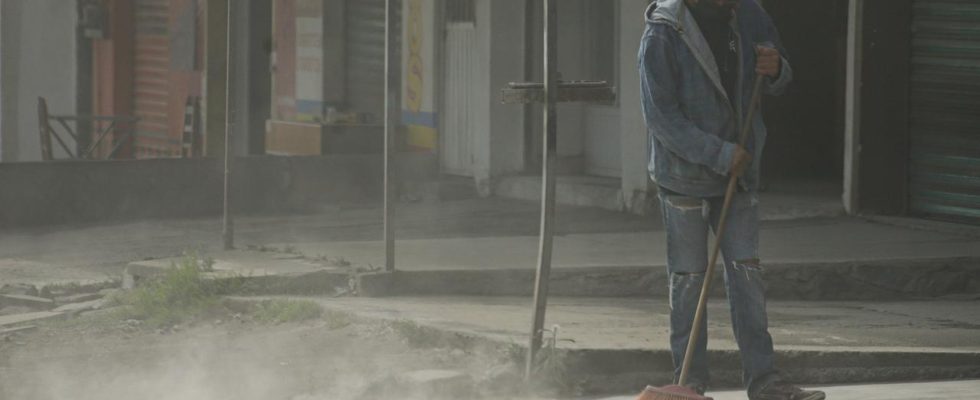The Popocatepetl volcano in the Mexican highlands spews ash. A major eruption is not expected, but there were flight cancellations in many places, and numerous places in the area are covered with ash.
Ash, steam and gases from the central Mexican volcano Popocatepetl restrict public life in large parts of the country. The international airport in the city of Puebla will remain closed for the time being, the state operator ASA announced.
The ash should be removed from the runways and the situation should then be reassessed. There were also numerous flight cancellations and delays at Mexico City Airport.
A cloud of fine ash covers houses and streets in several towns around Popocatepetl – for example in Atlixco.
“Prepared for any emergency”
The Popocatepetl has been emitting ash, steam and gas for days. However, experts assume that the volcanic activity will be limited, as the disaster prevention authority announced. The alert level remained at the third amber phase, one step ahead of the red alert level.
The ashfall of Popocatepetl about Atlixco, a town near the volcano, was bathed in volcanic fog during the night.
Face-to-face classes were canceled in 40 cities and towns in the state of Puebla. The lessons for over a million schoolchildren in the region would be held virtually, Governor Sergio Salomon Cespedes wrote on Twitter. One is “prepared for any emergency”.
More than 7,000 soldiers are deployed in the vicinity of the volcano, which is around 85 kilometers south-east of Mexico City. Evacuation routes and emergency shelter designations were reviewed. According to the civil defense, on Monday there was a 1,600 meter high column of smoke above the crater of the volcano.
The Popocatepetl is considered one of the most active volcanoes in Mexico. It lies on the border of the states of Mexico, Puebla and Morelos and is more than 5000 meters high. There has been a twelve-kilometer exclusion zone around the volcano for years. About 25 million people live within a radius of 100 kilometers.

